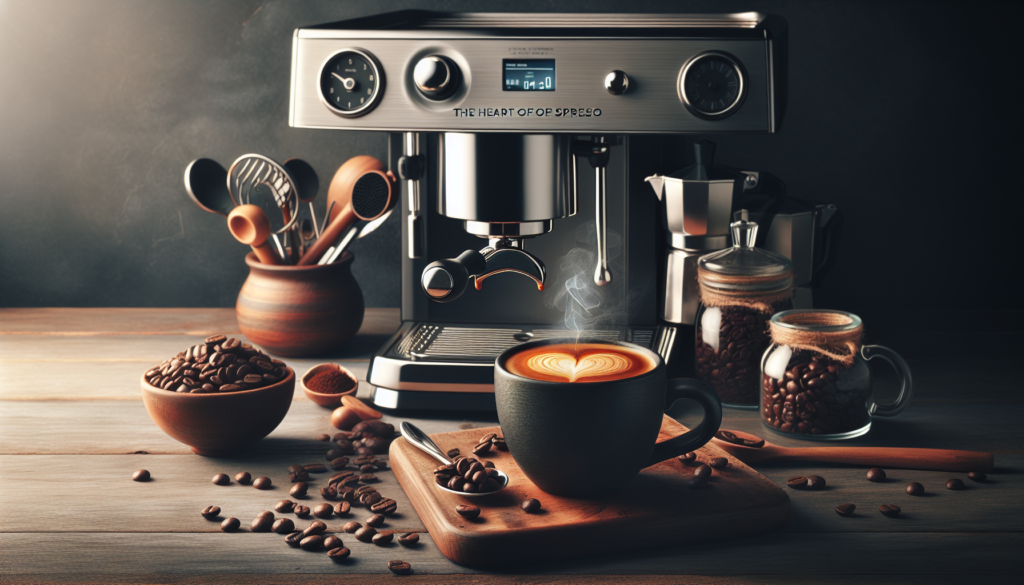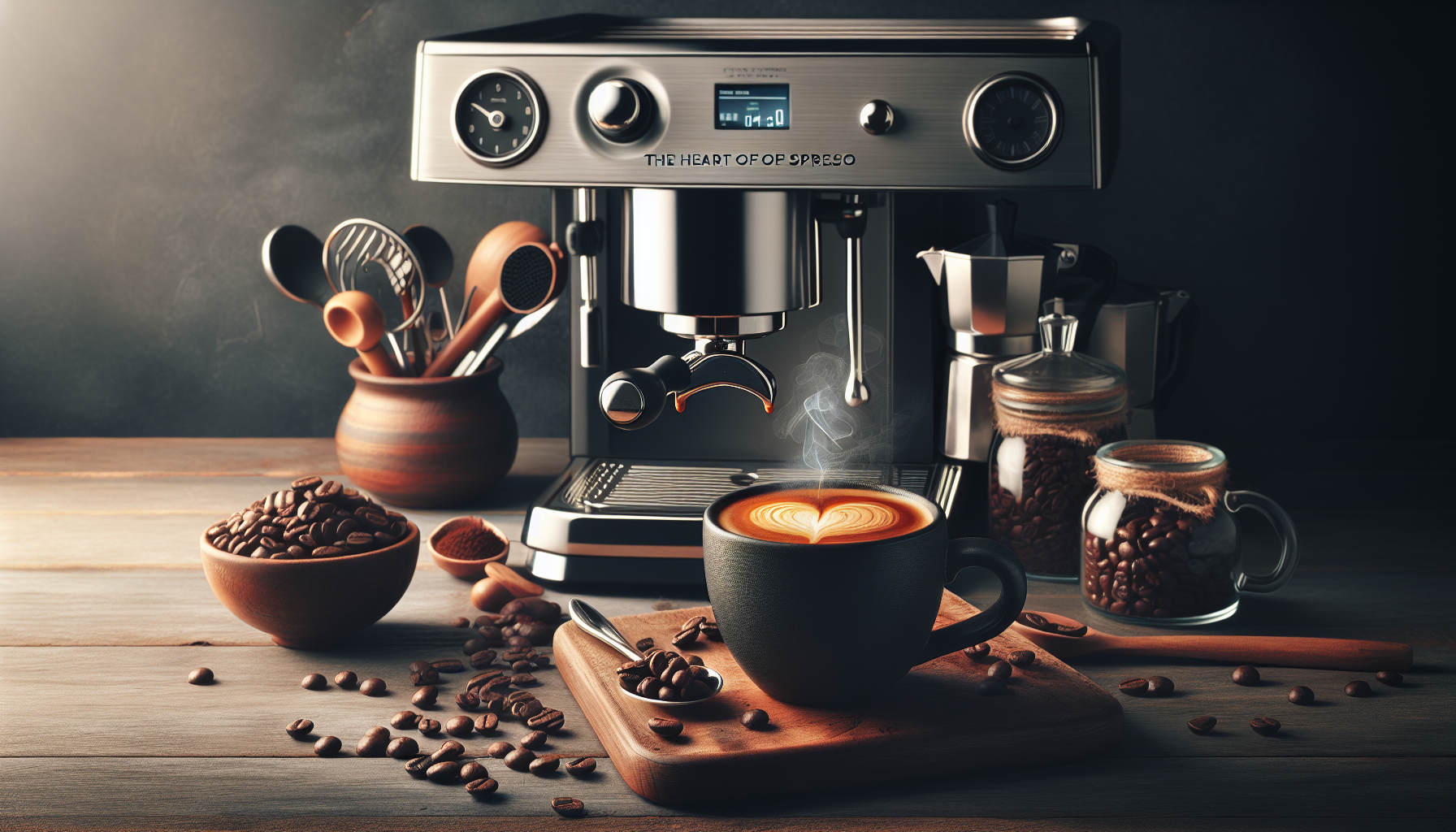If you’re a coffee enthusiast who craves the perfect cup of espresso without having to leave the comfort of your own home, look no further. This article will guide you through the simple yet effective steps on how to make the best espresso in the convenience of your own kitchen. From choosing the right beans to mastering the art of extraction, we’ll help you unlock the secrets behind brewing a rich, aromatic espresso that will rival any coffeehouse creation. Get ready to embark on a delicious journey as we share our tips and tricks for creating the perfect espresso experience at home.

CHECK OUT ESPRESSO MACHINES ON AMAZON
Selecting the Right Espresso Machine
When it comes to selecting the right espresso machine for your home, there are a few factors you should consider. Firstly, think about the type of machine that best suits your needs. There are various options available, including manual, semi-automatic, and fully automatic machines. Manual machines require more skill and effort, while automatic machines offer more convenience. Think about your level of experience and how involved you want to be in the espresso-making process.
Next, determine your budget. Espresso machines can range in price from affordable options to high-end models with advanced features. Consider how much you are willing to invest in an espresso machine, keeping in mind that a higher price often reflects better quality and durability. It is also worth considering the long-term costs of owning an espresso machine, such as maintenance and the cost of coffee beans.
Once you have narrowed down your options based on type and budget, it’s time to check the machine’s features and specifications. Look for features such as a built-in grinder, programmable settings, and adjustable temperature controls. Consider the size of the machine and whether it will fit in your kitchen space. Read reviews and compare different models to ensure you choose a machine that meets your specific needs and preferences.
Choosing the Right Coffee Beans
Selecting the right coffee beans is essential for brewing a delicious espresso at home. Opt for fresh and high-quality beans to ensure the best flavor in your cup. Look for beans that have been recently roasted, as they will have a more vibrant and aromatic taste. Consider purchasing beans from a reputable coffee roaster or specialty coffee shop to guarantee their quality.
When choosing between a single-origin or blend, it ultimately comes down to personal preference. Single-origin beans come from a specific region or farm and often have distinct flavors and characteristics. On the other hand, blends combine beans from different origins to create a balanced and consistent flavor profile. Experiment with both to discover your preferred taste.
In addition to origin, consider the roast level of the beans. Lighter roasts preserve more of the bean’s original flavors, resulting in a brighter and more delicate espresso. Darker roasts, on the other hand, bring out bolder and richer flavors. Choose a roast level that aligns with your taste preferences and the flavors you want to experience in your espresso.
Grinding the Coffee Beans
Investing in a quality burr grinder is crucial for achieving the perfect grind consistency. Unlike blade grinders, burr grinders crush the coffee beans evenly, resulting in a more uniform grind size. This consistency is essential for extracting the optimal flavors from the beans during the brewing process. Consider purchasing a burr grinder with adjustable settings, allowing you to experiment with different grind sizes to find the one that works best for your machine and taste preferences.
Grind the coffee beans just before brewing to ensure freshness and flavor. Coffee beans start to lose their aroma and flavor shortly after grinding, so it’s best to grind them right before you’re ready to brew. This will ensure that you capture all the delicious flavors in your espresso. Invest in a grinder with a convenient dosing feature that allows you to grind the exact amount of coffee you need for each shot.
When grinding the coffee beans, it’s important to adjust the grind size according to your machine. Different espresso machines require different grind sizes to achieve the desired extraction. Generally, a finer grind works best for espresso machines, as it allows for a slower extraction and a more flavorful cup of coffee. Start with a medium-fine grind and make adjustments based on the taste and extraction time of your espresso.
Tamping the Ground Coffee
Tamping involves applying firm and consistent pressure to the ground coffee in the portafilter, ensuring even extraction and a well-balanced espresso. To achieve optimal results, use a flat and evenly distributed tamper that matches the size of your portafilter. This will create a uniform surface for the water to flow through, preventing any uneven extraction.
When tamping, apply a firm and consistent pressure to compact the coffee grounds. A general rule of thumb is to apply around 30 pounds of pressure, but this can vary depending on personal preference and the specific espresso machine you are using. Experiment with different pressures to find the sweet spot that produces the best results for your taste.
Maintaining a level and parallel tamp is essential for even extraction. Avoid tilting the tamper or applying uneven pressure, as this can lead to channeling, where water finds the path of least resistance and results in an imbalanced extraction. Practice tamping technique to ensure a level and parallel tamp every time, leading to a consistent and flavorful espresso shot.
Brewing with the Espresso Machine
To brew the perfect espresso shot, there are a few key steps to follow. Start by purging and preheating your machine. This involves running hot water through the group head and portafilter to ensure the machine is at the correct temperature for brewing. Preheating helps to maintain the optimal extraction temperature, resulting in a more flavorful and balanced espresso.
Next, dose the correct amount of coffee into the portafilter. Consistency is key here, as using too much or too little coffee can affect the taste and extraction of your espresso. Use a scale to measure the desired amount of coffee for each shot, ensuring accuracy and repeatability.
Controlling the extraction time and temperature is crucial for a well-balanced espresso. Aim for an extraction time of around 25-30 seconds, as this allows for the optimal extraction of flavors from the coffee. Additionally, keeping the temperature within the recommended range, typically between 195-205°F (90-96°C), ensures that the flavors are balanced and not over or under-extracted.
Mastering the Espresso Shot
Evaluating the extraction yield is a crucial step in mastering the espresso shot. The extraction yield refers to the ratio of coffee to the final beverage weight and is often expressed as a percentage. Aim for an extraction yield of around 18-22%, as this range typically produces a well-extracted and flavorful espresso. Experiment with different extraction yields to discover your preferred taste and balance of flavors.
Assessing the aroma and crema of the espresso shot can provide valuable insights into its quality. Aroma is an important aspect of coffee appreciation, as it enhances the overall sensory experience. In addition, a thick and golden crema is a sign of a well-extracted espresso. It should be velvety in texture and have a rich color. Pay attention to the aroma and crema to gauge the quality of your espresso.
Adjusting the grind and extraction parameters may be necessary to achieve the desired taste in your espresso shot. If the extraction is too fast or the espresso tastes weak, consider grinding finer and increasing the extraction time. On the other hand, if the extraction is too slow or the espresso tastes bitter, try grinding coarser and decreasing the extraction time. Make small adjustments and taste as you go to find the perfect balance.
Steaming Milk for Milk-Based Drinks
For those who enjoy milk-based drinks such as lattes and cappuccinos, steaming milk properly is essential. Start by choosing the right milk for steaming. Whole milk generally produces a creamy and rich texture, while skim or non-dairy milk options may result in a different mouthfeel and taste. Experiment with different milk options to find the one that suits your preferences.
Texture and stretch the milk properly to create silky and velvety microfoam. Start by purging any excess water from the steam wand to ensure a dry steam. Submerge the steam wand just below the surface of the milk and create a whirlpool motion until the milk reaches the desired temperature. This process helps to evenly distribute the foam and create a smooth texture.
Creating latte art takes practice and patience but can add an impressive touch to your milk-based drinks. Master the basics of free pouring by starting with simple designs such as heart or tulip shapes. As you gain confidence and control, progress to more intricate and detailed designs. Remember that consistency is key, so practice regularly to improve your latte art skills.
CHECK OUT ESPRESSO MACHINES ON AMAZON
Cleaning and Maintenance
Regularly cleaning the espresso machine is essential to maintain its performance and longevity. Follow the manufacturer’s instructions for cleaning and descaling, as different machines may require specific cleaning methods. Remove and clean the group heads, portafilters, and steam wand after each use to prevent build-up and ensure a clean and hygienic machine.
Descaling the espresso machine periodically is necessary to remove mineral deposits that can affect the flavor and performance of your espresso. Use a descaling solution recommended by the manufacturer and follow the instructions carefully. Regular descaling helps maintain optimal water flow and temperature, ensuring a consistent and delicious espresso.
Keeping all components of the espresso machine in optimal condition is important for the quality of your espresso. This includes regularly replacing the water filter, gaskets, and other wear-and-tear parts. Stay proactive in maintaining your machine, as small repairs and replacements can prevent more significant issues down the line.
Experimenting and Refining
Making the best espresso at home is a continuous process of experimentation and refinement. Try different coffee beans and blends to discover new flavors and profiles. With each batch of beans, adjust the grind, extraction time, and dosage to highlight the unique characteristics of the coffee. Keep a log of your experiments and note the taste and adjustments made to refine your brewing process.
Experimenting with different brewing techniques can also yield exciting results. Try alternative brewing methods such as the AeroPress, pour-over, or French press to explore different flavor profiles and extraction methods. Each brewing technique has its own nuances and can bring out different aspects of the coffee’s flavor.
Refine your process through trial and error, paying attention to the taste, aroma, and overall experience of your espresso. Take note of the adjustments you make and how they impact the final result. As you continue to experiment and refine your brewing process, you will develop a deeper understanding of your espresso machine and be able to consistently brew the best espresso at home.

